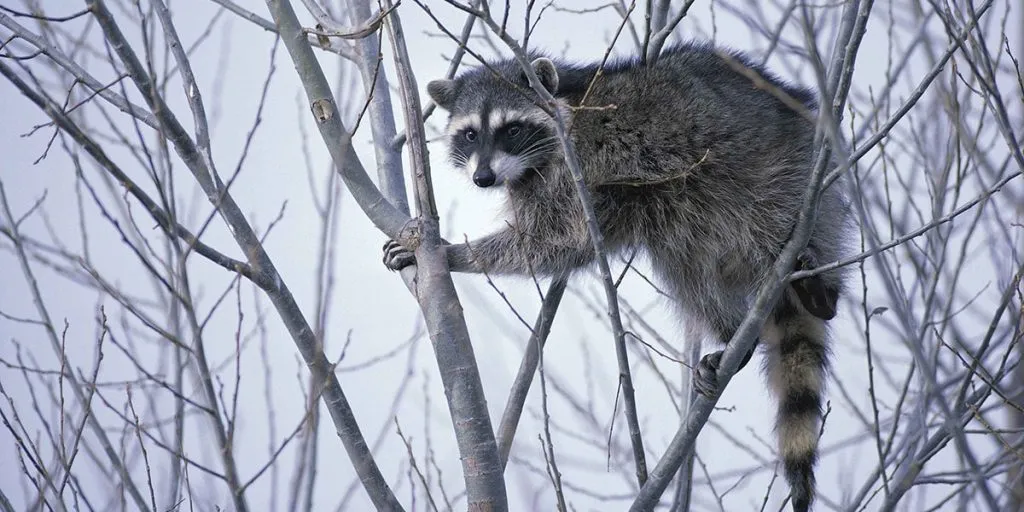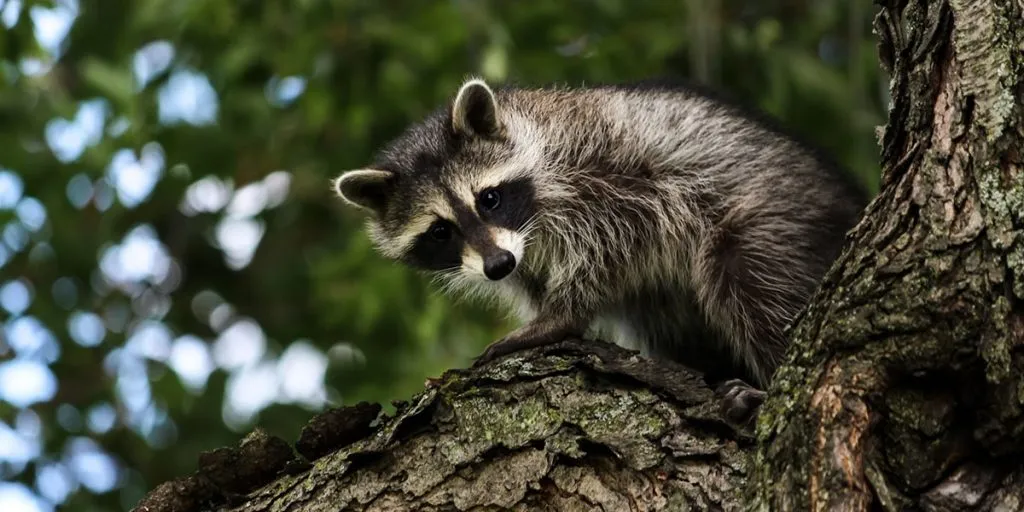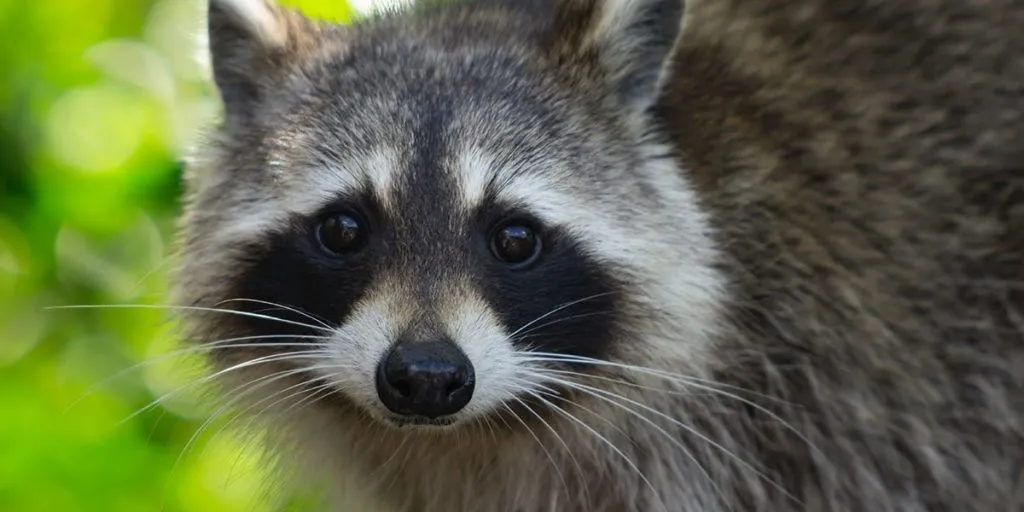Most people seem to think that raccoons hibernate in winter, others think that they migrate to warmer regions of the world. But the sleeping habits of the trash panda during the cold months are more complicated than that.
While raccoons do not hibernate or migrate in winter time, they will often sleep for up to a month during the coldest days of winter (below 15 °F or -10 °C). During their prolonged sleep, their bodies shut down and will go into a deep slumber.
The ‘hibernation’ of a raccoon is called ‘torpor‘, a state of physical or mental inactivity. While both hibernation and torpor involve physiological changes, energy conservation is more short-lived in torpor. Hibernating always involves a long-term state of dormancy, which is not something a raccoon will do during winter.
How Raccoons Prepare For Winter
The survival of many animals depends on how they get through the winter. The raccoon is no different from other mammals in this regard: it has to prepare for the tougher days ahead. There are a few things a raccoon will do to get through the cold winter days:
- Gaining fat: The most important strategy for winter survival is to eat as much as possible in summer, autumn, and early spring. Raccoons will attempt to gain fat throughout the months of food abundance, in an effort to survive the scarce cold months ahead.
- Thicker coat: While a raccoon gains weight, the coat will grow alongside the energy storage. The body will naturally respond to colder weather by increasing the volume and growth of hairs, resulting in thicker and more protective fur.
- Digging up dens: A ‘trash panda’ will always have multiple hiding spaces, preferable in locations where a food source is nearby (<1 mile away). Before the frost kicks in, raccoons will dig up dens to nest and sleep in. They won’t shy away from stealing an existing den from other species, such as foxes or prairie dogs.
Before the coldest days of winter, a raccoon will eat a lot of food to store up large amounts of fat. They mainly do this to circumvent the food scarcity in the winter period. They’ll also burn through their fat supplies during their prolonged periods of sleep.
They strategically locate their dens and burrows near a place where they can reliably get food. This will increase their chances of survival in all seasons.
However, when temperatures drop below a certain level, that’s when the ‘hibernation mode’ kicks in. Note that we use the term lightly, as it is actually torpor (as discussed above). All raccoons will become active during a winter day with moderate temperatures.
At What Temperature Do Raccoons Hibernate?
While raccoons never truly hibernate, they will become less active at temperatures below 15 °F (-10 °C). As temperatures fluctuate during the winter months, a raccoon will regularly come out of hiding to scavenge for food.
When winter temperatures drop below 15 °F (-10 °C), a raccoon will remain in its den and sleep until the world becomes more hospitable for finding a meal. They’ll remain in a state of ‘torpor’ for most of this time period.
It is important to note that mammals like raccoons do not travel south in search of a better winter climate. They will adapt to the seasons and will definitely not leave their summer habitats.
Where Do Raccoons Go In Winter Time?
Raccoons do not go away or migrate to warmer regions during the winter months. Instead, they spend most of their winter sleeping in tree hollows, burrows, abandoned buildings, barns, or in rock crevices. On relatively warm days, raccoons wake up and go scavenge for food.
The harshest winter days are always spent sleeping in nests. They’ll go in hiding alone, since most raccoons live as independent, solitary animals. A mother will find a nest for herself and her juvenile offspring from that year.
While their sleep can extend over multiple weeks during the coldest winter periods, a raccoon won’t go into permanent hibernation. In fact, they come out of their hiding spots quite a lot. They’ll mainly do this to feed and hydrate themselves.
Do Raccoons Come Out In The Winter?
Raccoons will do a lot of sleeping in the winter, but will come out of hiding to scavenge for food and water. During winter time, raccoons will primarily emerge from their nests to eat small animals, insects, nuts, berries, or food that humans threw out.
They are opportunistic feeders and will eat any type of food available. This is true for all seasons, but the lack of choice during the scarce cold days further emphasizes this feeding behavior.
Different from a squirrel, a raccoon will never dig in or stockpile food for later use, nor will it take food back to its den to eat later. Even during the cold winter days, raccoon dens are exclusively used for sleeping.
Being Active In Winter Can Be Dangerous
There are a lot of different animals that eat raccoons, so limiting their time outside their dens is a survival strategy. In winter it becomes a lot harder to flee from predators. Not only because of the contrast between the grey fur and white snow, but also because raccoons will avoid swimming in cold water.
There’s always a risk of hypothermia after going in the water (a natural place to be for these animals). And the more time is spent outside of their hiding places, the more energy is wasted. Sleeping saves precious energy, further increasing their odds of surviving the scarcity of winter.
After winter is over, dens and hiding places are not abandoned. They will still use various spots for sleeping during the day. After all, raccoons are most active at night, which is when they come out to feed, mate, or explore their surroundings for new food sources. They will wait for the spring before their ‘torpor’ wears off and become more active again.
If this article helped you understand raccoon behavior in winter better, make sure to share it with others using the social media buttons below. If you’d like to learn more about these wonderful animals, make sure to check out this article.



